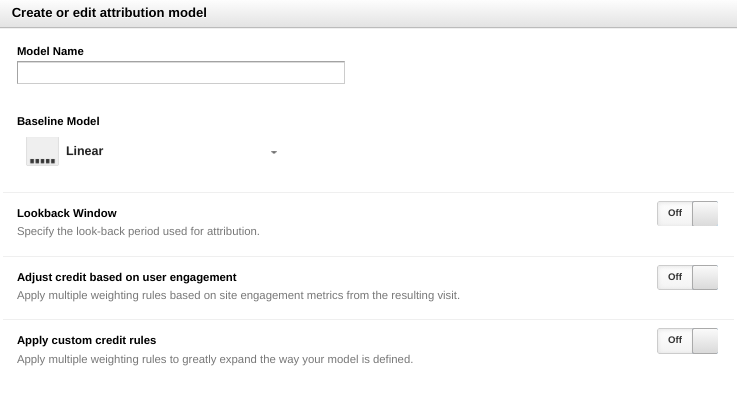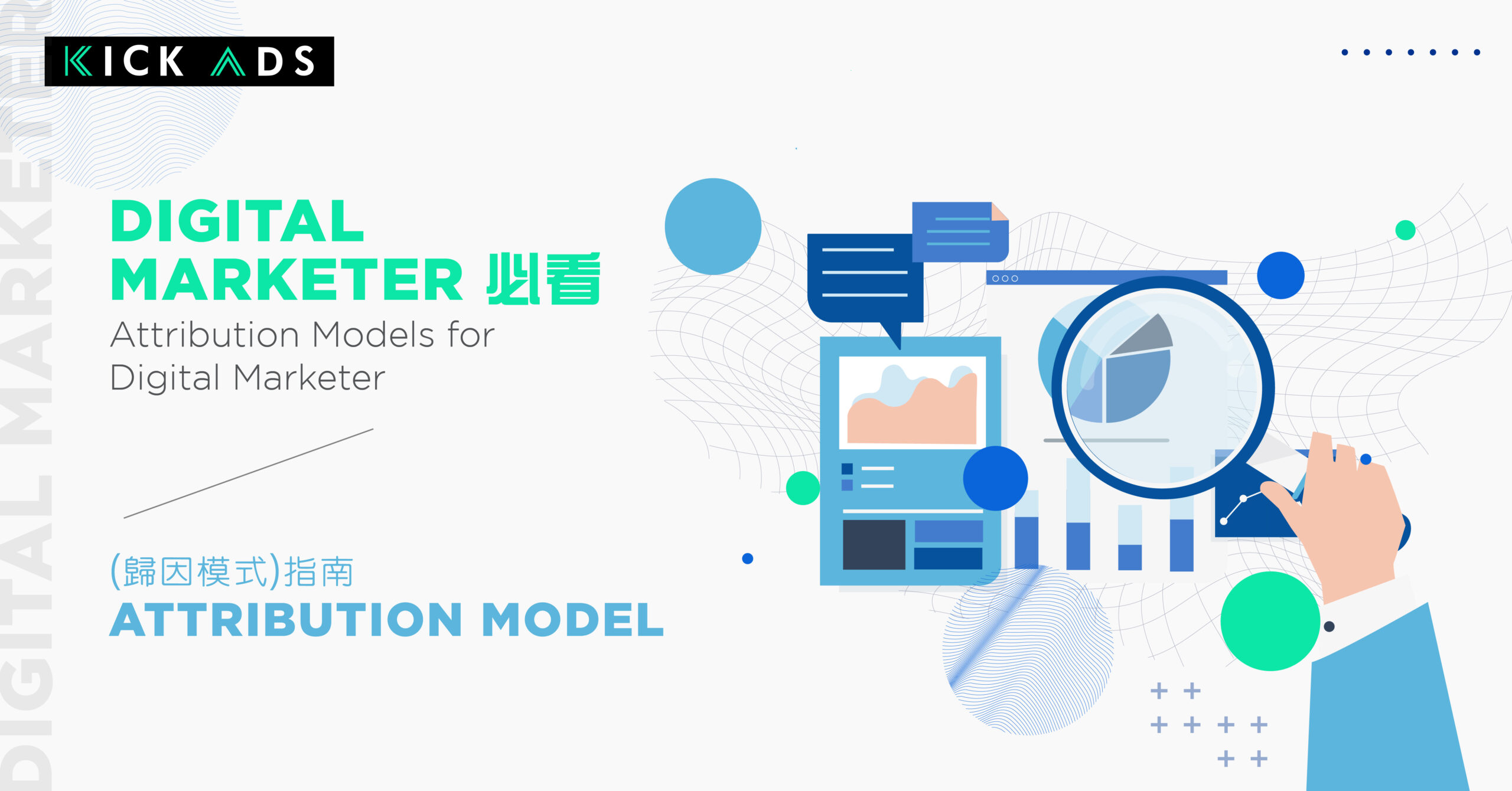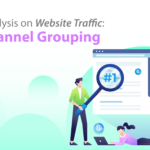Attribution Models for Digital Marketer: An Essential Guide
The distribution of resources within a society is a complex topic to cover as there is no correct or incorrect answer. The answer varies depending on the viewpoint of the individual. This is especially the case when it comes to digital marketing, particularly regarding the Attribution Model.
An Attribution Model refers to the set of rules that are used to determine how conversion credits should be attributed or distributed to different touchpoints within a conversion path. It is important to consider what is driving the conversion or action in the end as more commonly, individuals are experiencing multiple site interactions before making a decision.
Take this antidote, for example; Terrence, who has been looking for marketing consultation for his business for several weeks, clicks on a display advertisement which takes him to a website kickads.co, where he reads some articles. After another week has passed, he discovers an ad on Facebook about Digital Marketing that directs him to kickads.co for a second time. Two days later, kickads.co sends him an email which leads him to visit the website for the third time. This then leads him to directly go to the website and book a consultation.
So, in this example, what channel should the conversion fall in? Is the conversion all due to Google Ads? Facebook? Or was it Direct?
These are all questions that the marketing attribution model attempts to answer. In more simple terms, the Attribution Model is all about DISTRIBUTION.
The following are the fundamental categories of Attribution Models:
- Rule-Based Attribution Models
- Algorithmic Attribution Models
- Vendor Specific Attribution Models
- Custom Attribution Models
1. What are Rule-Based Attribution Models?
Rule-Based Attribution Models assign the conversion credit to touchpoints in a conversion path according to certain predefined rules that are set by the marketer.
These rules are then used to identify the interaction of individual customers within the purchase decision journey. They are then assigned a conversion credit when a purchase is made.
(i) First Interaction Attribution
First Interaction is also called “First-Click” and “First Touch” as it gives 100 percent of the conversion credit to a single click or interaction, which is your business’ first interaction with the customer.
For example, if one of your customers happens to discover your business page on Linkedin, Linkedin would then receive all of the credit for a conversion that happens after the interaction.
Within this model, it does not matter if the given customer clicked on the display ad a few days after they found you on Linkedin; Linkedin will receive full credit for acquiring the customer.
Why or Why Not Use First Interaction Attribution?
The main benefit of using First Interaction attribution is that it is simple and straightforward to understand. However, this model ignores the effects of any potentially important marketing touchpoints in between customer acquisition and the purchase decision.
If your main goal is to bring in new top-of-the-funnel customers, the First Interaction model is very suitable for you. And it’s great for branding agencies that mainly work on content management and brand awareness.
(ii) Last Interaction Attribution
Last Interaction Attribution is also referred to as “Last-click” or “Last-touch” which is very similar to First Interaction. It gives 100 percent of the credit to the last interaction your customer had with your business before a conversion.
Take this example; a potential customer visits your website through an organic search. Several days later, he then sees a Facebook Ad for your business and clicks on the ad. Later on that day, he then goes to your website through direct search and makes a purchase.
In this case, the direct search receives all of the credit for the conversion as that was the last touchpoint.
This is the default attribution model on most platforms, including Google Analytics. If you look at standard conversion reports in Google Analytics, you will see each goal attributed to the last interaction your customer had with your business and nothing that occurred before the last interaction.
Why or Why Not Use Last Interaction Attribution?
This attribution model is the simplest to implement and evaluate when it comes to conversions and analytics.
The downside is that this model ignores everything that happens before the final interaction. It does not capture the important interactions and touchpoints that occurred prior to the “last-click”, so it misses out on some important marketing points that may have taken place before the conversion.
(iii) Last Non-Direct Click Attribution
The Last Non-Direct Click Model is a bit more insightful compared to the Last-Click Model. In the Last Non-Direct Click Model, 100 percent of the value is also assigned to a single interaction. However, with this model, it eliminates any “direct” interactions that may have occurred before the conversion.
Direct traffic is when anyone goes directly to your site by manually entering your URL or clicking a bookmarked link, which means this visitor already knows about your company and has likely already experienced several touchpoints.
This model allows you to answer questions like: How did the customer learn about the company? What prompted them to go to the website directly? By eliminating direct traffic in the Last-Interaction Model, we can clearly assign value to the marketing channel that led to the conversion.
Why or Why Not Use the Last Non-Direct Click Model?
Compared with other methods, paid social media and paid search will get higher credit under this method.
(iv) Linear Attribution
With a Linear attribution model, you evenly split credit for a conversion between all the interactions that a customer had with your online marketing channels.
For example, if a customer discovers the business on Instagram, then signs up for your email list and later clicks an email link, then the next week they go to your site directly and make a $180 purchase, equal credit is assigned to all interactions.
There are three touchpoints in this situation. Each touchpoint gets equal credit of 33% or $60 conversion value.
Why or Why Not Use the Linear Attribution Model?
Linear Attribution provides equal value to all of your touchpoints instead of a single interaction, so it gives you a more balanced insight into your digital marketing strategy.
However, this means it also assigns equal importance to everything and does not account for strategies that may be more effective than others.
(v) Time Decay Attribution
The formula for Time Decay Attribution is comparatively complicated.There is Maths here. I won’t go further here but if you want to know the formula, fee free to check this article.
Time Decay Attribution is very similar to Linear Attribution which also spreads out the credits across multiple touchpoints. But unlike Linear Attribution, the Time Decay model also accounts for when the interaction occurred in the purchase process.
Interactions that occur closer to the time of purchase have more value attributed. The first interaction gets less credit, while the last interaction receives the most credit for the conversion.
Why or Why Not Use the Time Decay Attribution Model?
If your business relies heavily on building a customer relationship, the Time Decay Attribution model can help conceptualize this evolving relationship.
However, it is important to note that this model minimizes the effect of touchpoints that occur early on in the sales funnel, which may be useful for long sales cycles or expensive B2B products.
(vi) Position-Based Attribution
The Position-Based Attribution model (also called U-shaped attribution) splits the credit for a conversion between a potential customer’s first interaction with your business and the moment they successfully convert to a sale.
Within this model, 40% of the credit is given to the first and last points respectively, while the remaining 20% are spread out between other interactions that occur in the middle of the purchase journey.
For example, if a potential customer makes contact with your business through a Google search, then looks at your Facebook page, and then later on signs up for your email newsletter, the first and last touch points receive 40% of the credit each, and the Facebook visit receives the remaining 20%.
Why or Why Not Use the Position-Based Attribution?
Position-based attribution is a great model for businesses that have multiple touchpoints prior to conversion. It gives credit to every interaction. However, it attributes a stronger weight to the two most important interactions: the first time a customer interacts with the business and the interaction that prompted a successful conversion.
2. What is the Algorithmic Attribution Model?
Algorithmic Attribution models assign conversion credit to marketing touchpoints in a conversion path according to an algorithm. The most frequently used Algorithmic Attribution Model is the Data-Driven Model.
The data-driven attribution model (DDA) is available for Google Analytics 360 clients. Unlike the other models, the DDA model uses data to generate a custom model that assigns credit to touchpoints throughout the customer’s purchase journey.
This model receives Google Analytics data and information available through linked accounts: Google Ads, Google Display Network, and Campaign Manager. It then uses these interactions to create an algorithm to generate the attribution rules.
Maybe, I am not open-minded enough, I just feel like without knowing the rules, I feel not comfortable to rely on this model to analyze. Let ‘s take DDA Model as an example. Sometimes I suspect this model tends to assign more credit to its own products (GDN, Youtube and Google Search), compared with those social media platforms/competitors (Facebook, Linkedin and IG). But someone will say that this is the beauty of Machine Learning. No Predefined Rules at all! Based on different products, different people, different time and place, they will come up with a custom model to give a so-called clearer picture for advertisers.
3. What are Vendor Specific Attribution Models?
Vendor-Specific Attribution models are offered to vendors of a specific marketing platform to conceptualize the role that the platform played in conversion.
For example, in Google Analytics, the Google Ads Click Attribution Model assigns all credit for conversions to the last Google Ads Click in a conversion path. However, this ignores the role of other touchpoints in the conversion path.
Facebook also has different sets of attribution models on their Analytics Platform.
In short, such models are highly biased to their own platform and try to take as much conversion credit as possible.
4. What are Custom Attribution Models?
Do you have a particular weight or valuation for each touchpoint? Do you have a specific funnel that you want to evaluate?
These models are able to be created in Google Analytics. They allow a business to customize the weight of the individual touchpoints that are important.
How to Customize your Attribution Models?
There are a lot of things you can customize here.

Be Cautious! If you want to customize your Attribution Models, MAKE SURE you have read the this article to understand every metric of Attribution Modeling.
Why or Why Not Use the Custom Attribution Model?
From an agency perspective, you can manipulate the distribution of credit to favor the desired action, so it can be very misleading to use. However, if you are a brand owner and you have research on how to attribute credit, this method may be useful.
Conclusion
Normally, we will say the multi-Touch attribution model is better than single touch as single touch attribution model always leads to very unbalanced effort/ spending allocation to different channels which leads to an unhealthy marketing cycle. For example, if you use the last interaction attribution model, you will definitely overlook the top-of-funnel customers.
There is no the best attribution model in the world, but there is one golden formula for Performance Marketer: Try to compare different models before you jump to the conclusion which channel is better.







